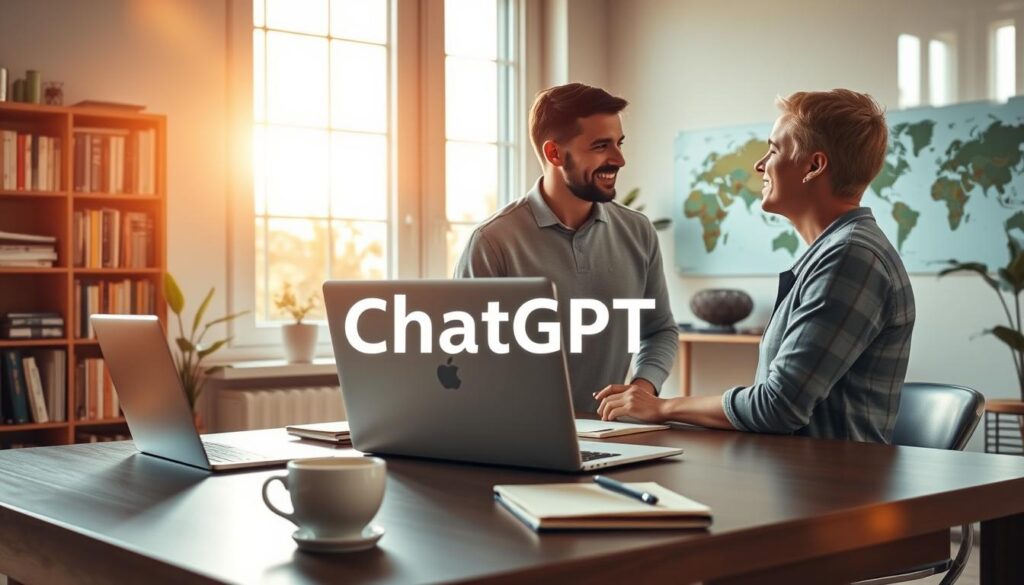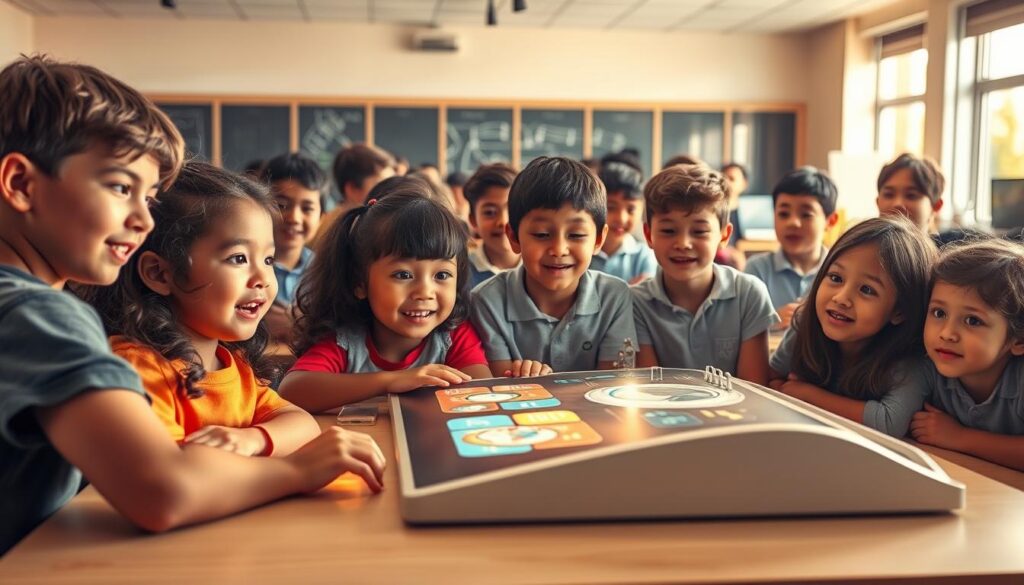ChatGPT, developed by OpenAI, has transformed the way we interact with technology. Launched in November 2022, this AI tool is designed to handle a wide range of tasks. From writing code to generating creative content, its applications are endless.
With the GPT-4o update in May 2024, ChatGPT now supports voice interactions and image processing. This makes it even more versatile for everyday life and professional work. Whether you need help solving math problems or translating language, this model delivers accurate results.
Real-world examples include writing resumes in LaTeX, generating recipes from fridge photos, and answering complex questions. However, ethical considerations like plagiarism detection and watermarking ensure responsible use of AI-generated information.
Key Takeaways
- ChatGPT is a versatile AI tool developed by OpenAI.
- It handles tasks like coding, content creation, and language translation.
- The GPT-4o update introduced voice and image processing capabilities.
- Real-world applications include resume writing and recipe generation.
- Ethical tools like plagiarism detection ensure responsible AI use.
What Can ChatGPT Do? Exploring Its Capabilities
The capabilities of ChatGPT extend far beyond simple text generation. This tool is built on advanced transformer neural networks, which predict words based on tokens. Its architecture allows it to process and generate responses efficiently, making it a versatile language model.

ChatGPT’s training involves two key phases. First, it learns from generic data to understand basic patterns. Then, it undergoes task-specific fine-tuning using conversation transcripts. This ensures it can handle a variety of topics with precision.
Understanding ChatGPT’s Core Functions
One of its standout features is real-time learning. User feedback, such as upvotes, downvotes, and written comments, helps refine its responses. This continuous improvement makes it a dynamic intelligence tool.
How ChatGPT Processes and Generates Responses
The free version uses GPT-3.5, while the paid version leverages GPT-4o. The latter can process up to 25,000 words, offering more detailed answers. OpenAI’s partnerships with Axel Springer and AP ensure the language model stays updated with current news.
15 Practical Ways to Use ChatGPT in Daily Life
Integrating AI into daily routines has never been easier. From professional tasks to creative projects, this tool offers solutions that save time and effort. Whether you’re preparing for a job interview or exploring new ideas, it’s a versatile assistant.

Writing Resumes and Cover Letters
Creating a polished resume is now simpler. For example, it can generate a SaaS content marketer resume using LaTeX. By integrating LinkedIn profiles and Overleaf, it customizes content to fit specific roles. Multilingual support also helps translate cover letters into multiple languages.
Creating Original Jokes and Memes
Need a laugh? It can craft jokes like, “Apple’s foldable iPhone: It bends so you don’t have to.” With DALL·E integration, it even generates memes, such as the “9-to-5 grind” image. These features add a touch of humor to daily life.
Simplifying Complex Topics
Struggling with difficult topics? It breaks them down into easy-to-understand explanations. For instance, it can describe wormhole theory to a 5-year-old. This makes learning STEM concepts or tackling essays much more approachable.
| Task | Example |
|---|---|
| Resume Writing | Customized SaaS marketer resume in LaTeX |
| Joke Creation | “Apple’s foldable iPhone: It bends so you don’t have to.” |
| Topic Simplification | ELI5 explanation of wormhole theory |
How ChatGPT Can Enhance Your Workflow
Streamlining tasks with AI has become a game-changer for professionals. Whether you’re debugging code or brainstorming content ideas, this tool offers solutions that save time and boost productivity. Let’s explore how it can transform your daily work.

Debugging and Writing Code
Developers can leverage AI to troubleshoot errors and write scripts efficiently. For example, it can debug JavaScript console errors or create a to-do app from scratch. With the Code Interpreter feature, even media file editing becomes seamless. Customizing website themes, like Divi, is also simplified with generated PHP plugins.
Generating Blog Topics and Content Ideas
Struggling to find fresh ideas? It can generate 15 WordPress blog topics on design trends in seconds. By adjusting temperature settings, you can refine keyword research for SEO. This ensures your content aligns with audience interests and search trends.
Assisting with Market Research
AI simplifies market analysis by providing actionable insights. For instance, it can identify Birmingham, AL demographics for web design services. Prompts like “Act as a jewelry store owner with declining sales” yield tailored strategies. This makes research faster and more effective.
Creative Applications of ChatGPT
From music to art, AI is revolutionizing how we express ideas. This tool is not just for text generation—it’s a powerhouse for creative professionals. Whether you’re crafting lyrics, scripting videos, or designing art, it offers endless possibilities.

Composing Music and Writing Lyrics
AI is making waves in the music industry. For instance, it can generate Afrobeat lyrics blending English and Spanish. Platforms like Suno.ai integrate seamlessly with this tool, allowing musicians to experiment with new ideas.
Lyric generation is just the beginning. Artists can refine their work by adjusting tone and style. This opens doors to continuous learning and innovation in the creative process.
Generating Video Scripts and Storylines
Video creators are also benefiting from AI assistance. For example, it can script a 30-second “Unknown Dog Facts” video with MidJourney art prompts. Templates for TikTok and YouTube make it easier to produce engaging content.
This tool ensures scripts are concise and tailored to the audience. It’s a game-changer for creators looking to streamline their workflow.
Creating AI Art and Media Files
Artists are exploring new frontiers with AI-generated media. Integration with DALL·E allows for meme creation and unique designs. Ethical considerations, like OpenAI’s collaboration with artists, ensure responsible use.
ChatGPT Plus takes it further with media file manipulation, introduced in July 2023. Features like OpenAI’s Copyright Shield protect enterprise users, making it a reliable tool for creative professionals.
Educational Uses of ChatGPT
AI-powered tools are reshaping education, offering innovative ways to enhance learning experiences. From simplifying complex topics to assisting with essays, this model is becoming a valuable resource for students and educators alike.

Explaining STEM Concepts
Understanding STEM subjects can be challenging. This tool breaks down complex ideas into simple explanations. For example, it can tutor algebra via step-by-step problem breakdowns, making math more approachable for students.
It also helps with advanced topics like wormhole theory, providing clear and concise answers. This makes it a great companion for both classroom learning and self-study.
Assisting with Homework and Essays
Struggling with assignments? It can generate essay outlines on topics like climate change, helping students organize their thoughts. This saves time and improves the quality of their writing.
Academic integrity is maintained with tools like GPT-4o’s “AI text classifier,” though it’s now discontinued. This ensures students use AI responsibly in their academic work.
Providing Language Translation and Learning
Language barriers are no longer an issue. This model has translated technical documents into 12 languages, making information accessible globally. It also supports language pronunciation practice through its voice mode.
Compared to Google Translate, it retains context better, offering more accurate translations. This makes it a reliable tool for both learning and professional use.
- Simplifies STEM concepts with step-by-step explanations.
- Generates essay outlines to improve academic writing.
- Supports language translation and pronunciation practice.
- Maintains academic integrity with discontinued tools like GPT-4o’s “AI text classifier.”
- Retains context better than Google Translate for accurate translations.
The Benefits of Using ChatGPT
AI-driven tools are reshaping how we approach productivity and innovation. By automating repetitive tasks and offering intelligent solutions, they empower users to achieve more in less time. Whether you’re a professional or a student, the advantages are clear and impactful.

Efficiency and Time-Saving
One of the standout benefits is its ability to save time. For instance, a CNET case study showed a 60% reduction in content creation time. Researchers can also process up to 25,000 words with GPT-4, making it a powerful tool for in-depth analysis.
This efficiency extends to everyday tasks, from drafting emails to organizing schedules. By handling these responsibilities, it allows users to focus on higher-priority job functions.
Cost-Effective Solutions
Another advantage is affordability. ChatGPT Plus costs $20 per month, compared to $200 per hour for freelance writers. For developers, the Pro version at $200 per month is far more economical than hiring a full-time coder.
This makes it a cost-effective solution for businesses and individuals alike. It democratizes access to advanced tools without breaking the bank.
Multilingual Support and Accessibility
With support for over 50 languages, including rare dialects, it bridges communication gaps globally. This multilingual capability ensures that data and content are accessible to a wider audience.
Additionally, features like ADA compliance make it inclusive for visually impaired users. Microsoft’s Azure Government integration, set for January 2025, further enhances its accessibility and security.
OpenAI’s $10 billion partnership with Microsoft underscores its commitment to innovation and global reach. This collaboration ensures continuous improvements in training and model capabilities.
Limitations of ChatGPT
While ChatGPT offers impressive capabilities, it’s essential to recognize its limitations. Despite its advanced training and versatility, certain issues can affect its performance. Understanding these boundaries helps users manage expectations and use the model more effectively.

Accuracy and Reliability Concerns
One of the primary challenges is ensuring accurate answers. For instance, the 2023 CNET incident revealed AI-generated articles with factual errors. This highlights the need for human oversight when using AI for research or content creation.
Another issue is context shifts. For example, when comparing “horse vs. cat as pets,” the model may struggle to maintain consistent reasoning. An arXiv study found that 15% of STEM explanations contained factual errors, emphasizing the importance of verifying information.
Understanding Sarcasm and Irony
ChatGPT often struggles with nuanced language, such as sarcasm or irony. While it excels at generating straightforward text, interpreting subtle tones remains a challenge. This limitation can lead to misunderstandings in certain topics or conversations.
Lack of Source Citations
Another notable limitation is the absence of auto-citations. Unless explicitly requested, the model doesn’t provide sources for its answers. OpenAI’s “knowledge cutoff” disclaimer also means it may lack data on events post-2023, affecting its reliability for current research.
| Limitation | Example |
|---|---|
| Accuracy Issues | CNET’s AI-generated articles with factual errors |
| Context Shifts | Struggles with “horse vs. cat as pets” comparison |
| Nuanced Language | Difficulty understanding sarcasm and irony |
| Source Citations | No auto-citations without explicit requests |
OpenAI’s partnership with Stack Overflow aims to improve code accuracy, but users should remain cautious. By acknowledging these limitations, users can leverage ChatGPT more effectively while minimizing potential issues.
Ethical Considerations When Using ChatGPT
As AI tools become more integrated into daily life, ethical considerations are crucial to ensure responsible use. From academic integrity to privacy concerns, understanding these issues helps users navigate the potential pitfalls of AI technology.

Plagiarism and Academic Integrity
One of the most pressing issues is the potential for plagiarism. Tools like Turnitin’s AI detection system claim 98% accuracy in identifying AI-generated content. This is especially important in academic settings, where maintaining integrity is essential.
OpenAI has also introduced measures to address this, such as watermarking AI-generated text. These steps help ensure that learning environments remain fair and transparent.
Bias in Training Data
Another ethical concern is bias in the data used to train AI models. For example, racial bias in facial recognition data has led to inaccurate results. OpenAI has conducted diversity audits for tools like DALL·E to mitigate these issues.
Efforts like these are critical to creating AI tools that are fair and inclusive for all users.
Privacy and Security Issues
Privacy is a major concern when using AI. Italy’s March 2023 ban over GDPR violations highlights the importance of protecting user data. OpenAI has addressed security issues, such as patching ChatGPT-generated malware attempts in 2023.
Upcoming features like ChatGPT Gov, set for January 2025, will offer secure Azure hosting, ensuring compliance with regulations like the EU’s AI Act. These measures aim to build trust in AI tools.
“Ethical AI is not just a goal; it’s a necessity for building trust and ensuring responsible innovation.”
- Turnitin’s AI detection tool claims 98% accuracy in identifying AI-generated content.
- OpenAI’s DALL·E diversity audits address bias in training data.
- ChatGPT Gov will offer secure Azure hosting starting January 2025.
- The EU’s AI Act sets compliance requirements for ethical AI use.
- Anthropic’s Constitutional AI provides an ethical alternative for AI development.
Conclusion: Unlocking the Potential of ChatGPT
ChatGPT has proven to be a versatile tool, offering over 80 use cases from writing code to generating creative content. Its ability to simplify complex language tasks and enhance work efficiency makes it invaluable for professionals and students alike. Emerging features like WhatsApp integration and the Operator AI assistant promise even greater functionality in the near future.
Ethical use remains a priority. Fact-checking and bias mitigation are essential to ensure responsible AI adoption. With GPT-5’s rumored 2026 release, multi-modal reasoning could redefine how we interact with this tool.
Experiment with custom GPTs for niche tasks to unlock its full potential. Explore more mind-blowing prompts to elevate your productivity and creativity. The future of AI is here—embrace it wisely.

